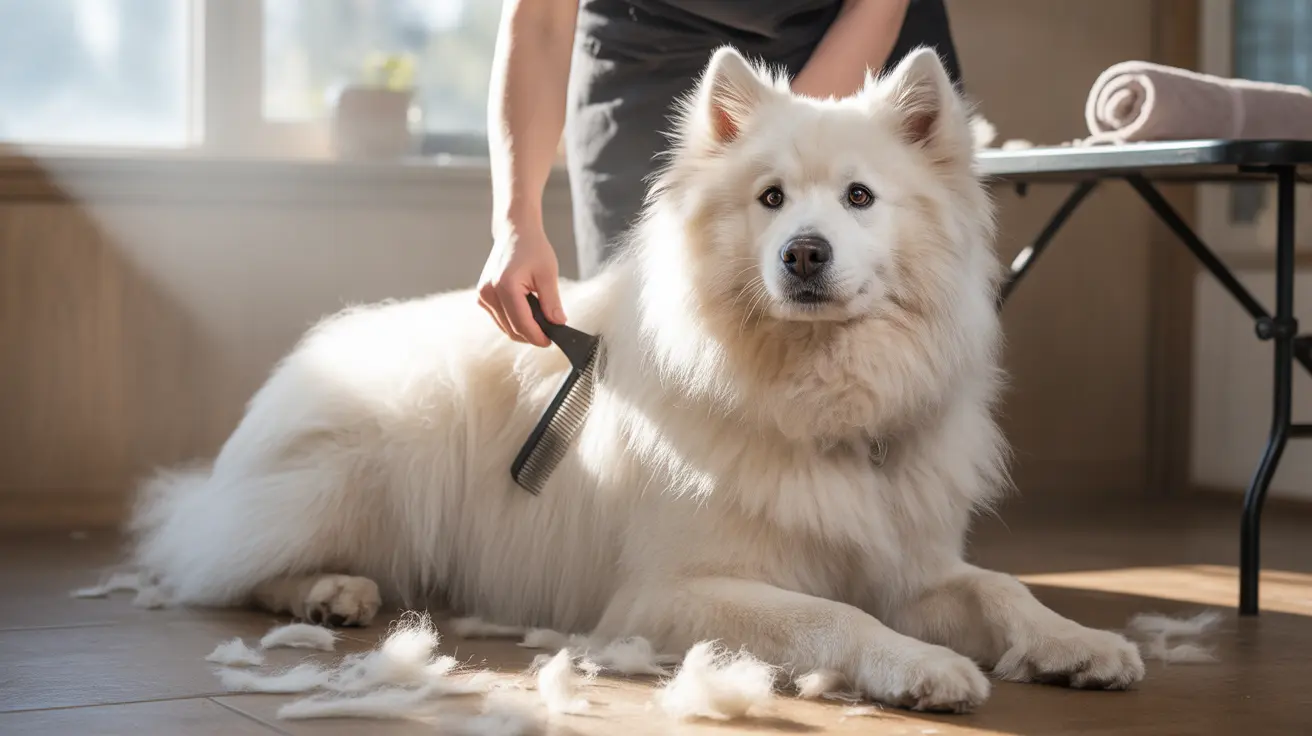When it comes to dog breeds known for their impressive fur coats, Samoyeds stand out as one of the most magnificent – and most challenging in terms of shedding. These beautiful Arctic dogs are famous for their thick, white double coats that, while stunning, come with significant maintenance requirements. Understanding exactly how much Samoyeds shed is crucial for both current and prospective owners.
If you're considering bringing a Samoyed into your home or looking to better manage your existing pet's shedding, this comprehensive guide will walk you through everything you need to know about Samoyed shedding patterns, management strategies, and essential care requirements.
Understanding the Samoyed's Double Coat
Samoyeds possess a distinctive double coat that evolved to protect them in harsh Siberian conditions. The outer coat consists of straight, harsh guard hairs that repel moisture and snow, while the undercoat is soft, thick, and woolly, providing essential insulation. This specialized coat structure is directly responsible for their significant shedding patterns.
The combination of these two coat layers means that Samoyeds don't just shed – they shed prolifically. Their fur is so abundant that historically, their shed undercoat was collected and spun into yarn for clothing, a practice some enthusiasts continue today.
Seasonal Shedding Patterns
Samoyeds experience two distinct types of shedding: regular year-round shedding and seasonal "blowouts." During normal periods, these dogs will shed consistently but manageably. However, the seasonal blowouts are what truly set them apart from other breeds.
These major shedding events typically occur twice a year, usually in spring and fall, lasting anywhere from two to six weeks. During these periods, the entire undercoat "blows out," resulting in massive amounts of loose fur that comes out in clumps. Unspayed females typically experience two major sheds annually, while intact males may only have one significant seasonal shed.
Essential Grooming Requirements
Managing a Samoyed's shedding requires a consistent and thorough grooming routine:
- Daily brushing during shedding seasons
- 2-3 times weekly brushing during regular periods
- Regular use of undercoat rakes and slicker brushes
- Professional grooming every 4-6 months
- Strategic bathing schedule (every 6-8 weeks)
Using the right tools is crucial for effective grooming. An undercoat rake is essential for removing loose undercoat during blowouts, while a high-quality slicker brush helps maintain the outer coat and prevent matting.
Managing Shedding in Your Home
Living with a Samoyed requires preparation and dedication to home maintenance:
- Invest in a high-quality vacuum designed for pet hair
- Keep lint rollers in multiple locations around your home
- Consider using washable slip covers on furniture
- Establish regular cleaning schedules during heavy shedding periods
- Use air purifiers to help manage airborne fur
Impact of Diet and Health on Shedding
The amount a Samoyed sheds can be influenced by various health and dietary factors. A high-quality diet rich in essential fatty acids and protein can help maintain healthy coat condition and potentially reduce excessive shedding. Regular veterinary check-ups are also crucial to ensure that unusual shedding patterns aren't indicating underlying health issues.
Frequently Asked Questions
How much do Samoyeds shed throughout the year and during their seasonal blowouts?
Samoyeds shed moderately year-round and experience intense seasonal blowouts twice yearly, lasting 2-6 weeks each. During blowouts, they can shed enough fur to fill multiple garbage bags as their entire undercoat is replaced.
What are the best grooming tools and brushing frequency to manage Samoyed shedding effectively?
Essential tools include an undercoat rake, slicker brush, and pin brush. Brush daily during blowouts and 2-3 times weekly during regular periods. Professional grooming tools like high-velocity dryers can also be beneficial.
How can I reduce excessive shedding in my Samoyed through diet and grooming practices?
Feed a high-quality diet rich in omega fatty acids, maintain a regular grooming schedule, and ensure proper hydration. While you can't prevent shedding entirely, consistent care can help manage it effectively.
How often should I bathe my Samoyed to maintain coat health without increasing shedding?
Bathe your Samoyed every 6-8 weeks using a quality dog shampoo. Over-bathing can strip natural oils and increase shedding, so avoid bathing more frequently unless necessary.
When should I be concerned that my Samoyed's shedding might indicate a health problem?
Consult a veterinarian if you notice patchy shedding, bald spots, skin irritation, or unusual shedding patterns outside normal seasonal changes. These could indicate underlying health issues requiring attention.






